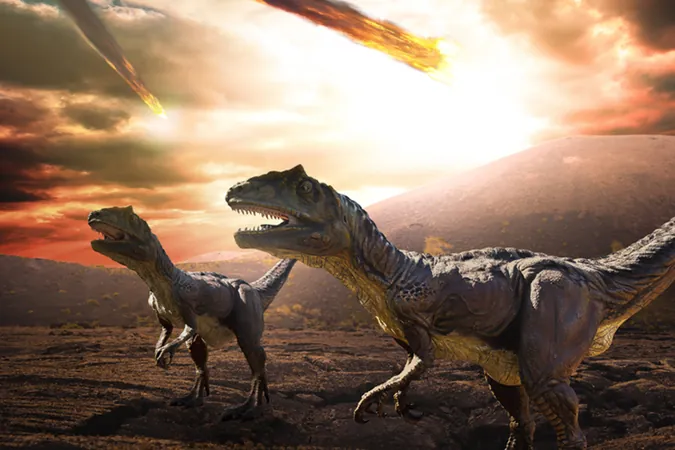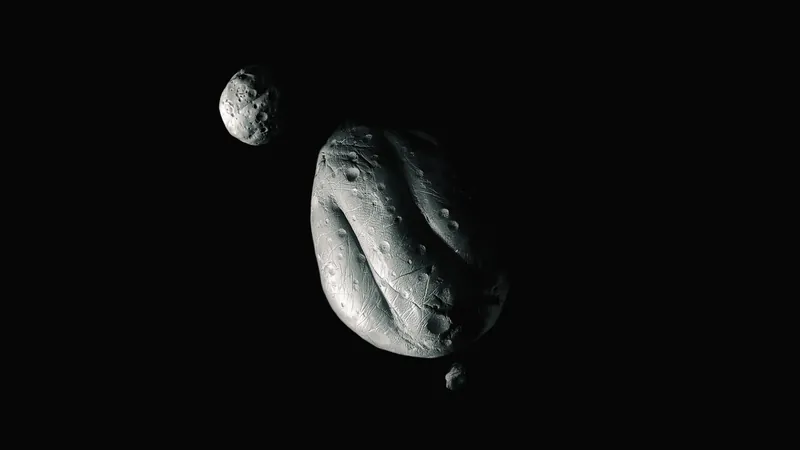
Dinosaur Fossils Might Hold the Secret to Advanced Cancer Treatments!
2025-05-29
Author: Li
Could Dinosaurs Help Us Conquer Cancer?
In a groundbreaking revelation, scientists assert that examining dinosaur fossils may unlock new avenues for cancer treatment in humans. A collaborative decade-long study by researchers from Anglia Ruskin University and Imperial College London has unearthed astonishing findings: preserved structures resembling red blood cells within a dinosaur fossil.
The Astonishing Fossil Discovery!
Published in the journal Biology, this study reveals that ancient creatures could aid in understanding prehistoric tumors, paving the way for advancements in modern cancer treatments. Professor Justin Stebbing from ARU was inspired to delve into this research back in 2016 after encountering an article about a dinosaur fossil discovered in Romania, which contained a tumor in its jaw.
The fossil in question belonged to a Telmatosaurus transsylvanicus, an intriguing plant-eating 'marsh lizard' that roamed the Earth 66 to 70 million years ago in what is now Romania.
Dr. Biancastella Cereser, a cancer specialist at Imperial, recounted how their journey began: 'Justin said, guys, I want to go and get this tumor and see what we can get out of it.' They aimed to understand whether the tumor found in this ancient dinosaur—an ameloblastoma, which also appears in humans—shared any similarities with human cancers.
An International Collaboration!
Beginning in 2017, an expert team formed, including prominent scientists focused on human cancers—Professor Stebbing, Dr. Cereser, and Professor Pramodh Chandrasinghe from Sri Lanka's University of Kelaniya. Their ambition was set: to analyze the fossil.
Dr. Cereser joyfully described their contact with the Romanian town that housed the fossil: 'They were thrilled to loan us the specimen!' The team traveled to Romania, meticulously collected the fossil, and brought it back for research.
Revealing the Past Through Cutting-Edge Technology!
Using an ultra-fine drill, they expertly prepared the fossil, which was then examined under a sophisticated microscope. To their amazement, they identified low-density structures that looked strikingly similar to red blood cells.
Professor Stebbing elaborated, 'Previously, fossil records were primarily used for hard materials like shells or bones. But our findings show that we can also study soft tissues, providing insights into cancer that existed millions of years ago and how the environment shaped these cancers.'
A New Era in Cancer Research?
While invoking images of 'Jurassic Park,' Professor Stebbing clarifies, 'Contrary to the movie, we can't extract viable dinosaur DNA due to its degradation over time. However, we can recover proteins from soft tissues that withstand the ages.'
Their ultimate goal? To piece together the intricate puzzle of cancer's molecular structure using insights from long ago, potentially leading to innovative treatments. As Professor Stebbing passionately stated, 'If we can understand cancer better, we can develop improved therapies.'





 Brasil (PT)
Brasil (PT)
 Canada (EN)
Canada (EN)
 Chile (ES)
Chile (ES)
 Česko (CS)
Česko (CS)
 대한민국 (KO)
대한민국 (KO)
 España (ES)
España (ES)
 France (FR)
France (FR)
 Hong Kong (EN)
Hong Kong (EN)
 Italia (IT)
Italia (IT)
 日本 (JA)
日本 (JA)
 Magyarország (HU)
Magyarország (HU)
 Norge (NO)
Norge (NO)
 Polska (PL)
Polska (PL)
 Schweiz (DE)
Schweiz (DE)
 Singapore (EN)
Singapore (EN)
 Sverige (SV)
Sverige (SV)
 Suomi (FI)
Suomi (FI)
 Türkiye (TR)
Türkiye (TR)
 الإمارات العربية المتحدة (AR)
الإمارات العربية المتحدة (AR)